In any kind of writing, structure is a necessity. For poems, novels, song lyrics, and essays alike, a sound framework is non-negotiable.
It’s a road map for you and your audience that makes it easier for you to create and for your readers to relate.
So, imagine writing a college essay without proper arrangements.
You’ve done all your research and stayed up all night compiling all the necessary data, but how do you stitch it all together with your writing?
Following a clear structure lets you focus on your ideas and how you’ll present them. Yet many writers find it hard to structure an essay.
What belongs in an introduction versus a body paragraph? How do you craft a conclusion that doesn’t just repeat everything you’ve already said?
This guide breaks down everything you need to know about essay parts and structure, from essential components to optional elements that can elevate your writing.
What Are the 3 Main Parts of an Essay?
Every complete essay, regardless of length or complexity, contains three fundamental sections: an introduction, body paragraphs, and a conclusion.
Think of this structure as the skeleton of your essay—the framework that holds everything together.
Let’s explore each section in detail.
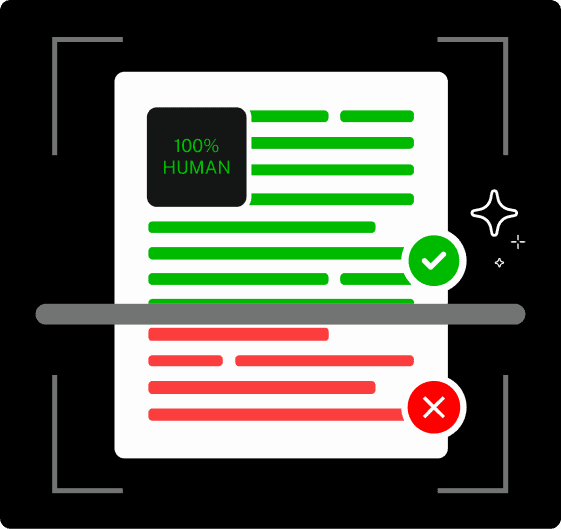
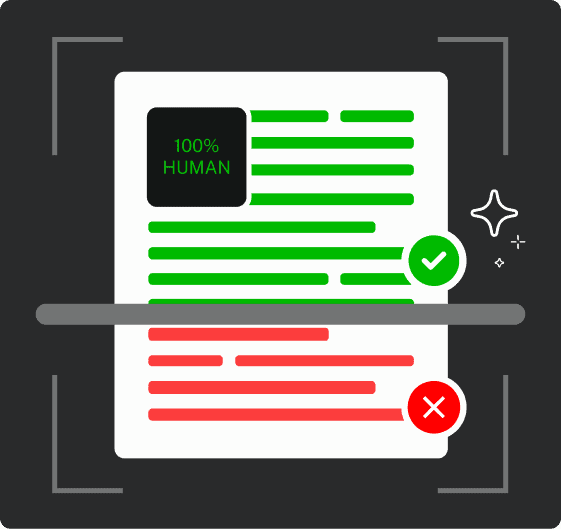
Never Worry About AI Detecting Your Texts Again. Undetectable AI Can Help You:
- Make your AI assisted writing appear human-like.
- Bypass all major AI detection tools with just one click.
- Use AI safely and confidently in school and work.
1. Introduction
The introduction serves as the gateway to your essay.
It’s your first impression on the reader, and as the saying goes, you never get a second chance to make a first one.
A strong introduction accomplishes several crucial tasks:
- Hooks the reader’s attention: Open with something compelling, like a thought-provoking question, surprising statistic, relevant anecdote, or bold statement. Your first sentence should make readers want to continue.
- Provides context: Give your readers the background information they need to understand your topic and its significance. This might include historical context, definitions of key terms, or a brief overview of the debate surrounding your topic.
- Presents your thesis statement: Your thesis statement is the central claim of your essay, which is the point you’ll be arguing or explaining throughout. It typically appears at the end of your introduction and should be clear, specific, and arguable.
Example of an introduction:
Artificial intelligence has transformed from science fiction fantasy to everyday reality in just a few decades. From voice assistants that manage our homes to algorithms that curate our entertainment, AI technologies have become deeply woven into the fabric of modern life. However, as these systems grow more sophisticated and autonomous, a crucial question emerges: Who bears responsibility….
Notice how this introduction begins with a broad statement about AI, narrows it down to provide context about its prevalence, identifies a specific problem, and concludes with a thesis statement that takes a clear position.
2. Body Paragraphs
Body paragraphs form the meat of your essay.
This is where you develop your arguments, present evidence, analyze information, and respond to counterpoints.
Effective body paragraphs share several key characteristics:
- Topic sentence: Each paragraph should begin with a sentence that states the main idea of that paragraph and connects to your thesis.
- Evidence: Support your claims with specific examples, statistics, expert opinions, or other forms of evidence. The more concrete and specific, the more convincing your argument.
- Analysis: Don’t just present evidence—explain how it supports your point so your critical thinking shines through.
- Transitions: Use transitional phrases to connect ideas within and between paragraphs, creating a smooth flow throughout your essay.
- Unity and coherence: Each paragraph should focus on a single main idea that supports your thesis, and all sentences within the paragraph should relate to that idea.
In a standard five-paragraph essay, you’ll have three body paragraphs. In longer essays, you might have many more organized into sections with their own subheadings.
Example of a body paragraph:
The primary responsibility for AI ethics must fall on the developers who create these systems. When programmers design algorithms, they embed—intentionally or not—their values, biases, and assumptions into the code. For instance, a 2018 MIT study found that facial recognition software had error rates of up to 34% for dark-skinned women compared to just 0.8% for light-skinned men. This disparity stemmed not from malicious intent but from training datasets that underrepresented certain demographic groups. By recognizing their role in shaping AI…
This paragraph opens with a clear topic sentence, provides specific evidence (the MIT study), analyzes the significance of this evidence, and concludes with an example of how developers can take responsibility.
3. Conclusion
The conclusion provides closure to your essay and leaves your reader with final thoughts to consider.
Rather than simply restating your thesis, use the conclusion to:
- Synthesize your main points: Briefly summarize the key arguments you’ve made throughout your essay.
- Restate your thesis: Return to your main claim, but rephrase it in light of the evidence and analysis you’ve presented.
- Suggest implications: Explain why your argument matters. What are its broader implications? How might it affect future research or action?
- End memorably: Consider concluding with a thought-provoking question, call to action, relevant quote, or forward-looking statement that connects your topic to larger concerns.
Example of a conclusion:
The ethical challenges posed by artificial intelligence cannot be solved by placing responsibility solely on developers, users, or regulators. Rather, a shared accountability framework acknowledges the complex interplay of human decision-making that shapes AI systems from conception to implementation. As we’ve seen, developers embed values in their code, deployers make crucial choices about implementation contexts, and regulatory bodies establish the legal boundaries that govern both. Moving forward, this distributed approach to AI ethics will….
Only through such collective responsibility can we ensure that artificial intelligence remains a tool that enhances human…
This conclusion synthesizes the main argument about shared responsibility, restates the thesis with added nuance, suggests implications for future collaboration, uses transition statements and ends with a broader statement about AI’s role in society.
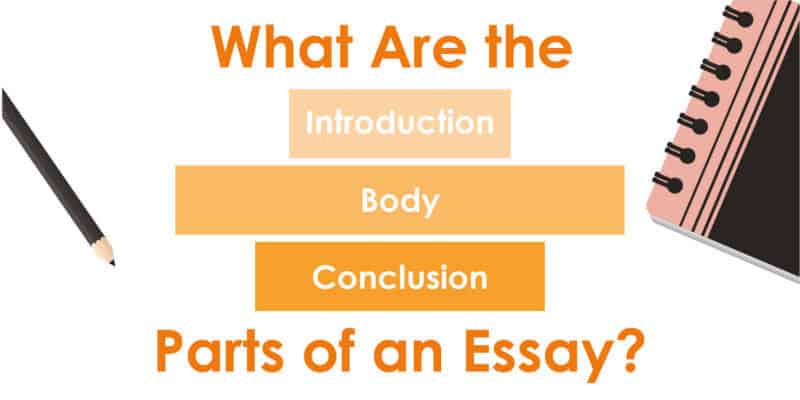
Still unsure how to wrap up your ideas without sounding repetitive?
Our AI Conclusion Generator makes it easy to craft a meaningful final paragraph that ties together your introduction and body with clarity and impact.
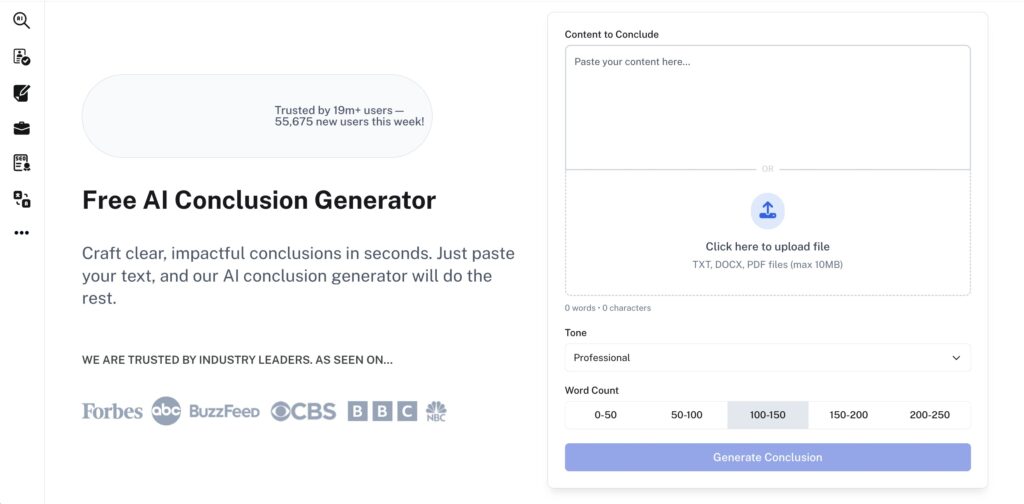
Optional Parts (Depending on Essay Type)
Beyond the three essential components, essays may include several optional elements depending on their purpose, audience, and academic discipline:
- Title page: Academic papers often require a separate title page with your name, the date, course information, and essay title.
- Abstract: Common in scientific and research papers, an abstract provides a brief summary of your entire paper, including your methods and findings.
- Table of contents: Longer papers may include a table of contents, particularly if they’re divided into numerous sections.
- Literature review: Research papers often include a section reviewing existing literature on your topic before presenting your own argument.
- Methodology: If your essay involves original research, you’ll need to explain your research methods.
- Appendices: Supplementary materials that are too detailed for the main text can be included in appendices.
- Bibliography/Works cited: Most academic essays require a list of all sources cited, formatted according to a specific citation style (MLA, APA, Chicago, etc.).
Remember that different academic disciplines have different conventions.
A humanities essay might emphasize creative language and style, while a scientific paper prioritizes precision and careful methods.
If you’re using APA Style, our APA Citation Generator makes it easy to format your references correctly.
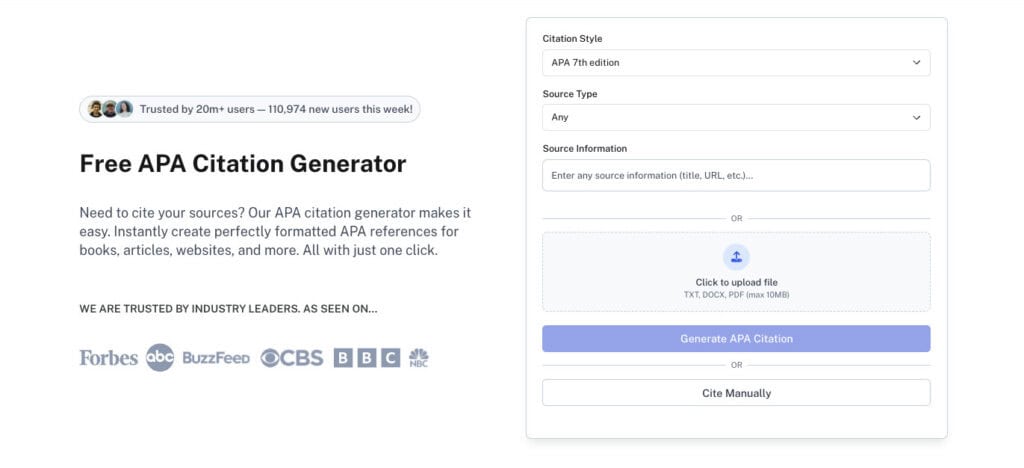
Just enter the author, title, date, and source details and it instantly builds a clean, properly styled citation ready for your bibliography.
Essay Structure Example (Short Sample)
To illustrate how essay structure works in practice, consider George Orwell’s classic essay, Shooting an Elephant.
It’s often cited in university writing courses for how cleanly it follows the traditional introduction-body-conclusion format while also delivering a sharp argument through a personal narrative.
1. Introduction: Orwell begins by setting the scene in colonial Burma, expressing his internal conflict about imperialism and his role as a colonial officer.
This opening establishes the central theme and foreshadows the moral dilemma he faces.
“In Moulmein, in Lower Burma, I was hated by large numbers of people—the only time in my life that I have been important enough for this to happen to me.”
2. Body Paragraph: As the essay progresses, Orwell narrates the incident of being pressured to shoot an elephant.
Each paragraph builds tension and develops his internal conflict—using storytelling, specific examples, and analysis of colonial dynamics.
“I had no intention of shooting the elephant—I merely sent for the rifle to defend myself if necessary—and it is always unnerving to have a crowd following you.”
This shows how body paragraphs can blend evidence (in this case, lived experience) with analysis, all while staying connected to the thesis.
3. Conclusion: Orwell reflects on the incident, revealing that he acted against his better judgment due to the expectations imposed by his position.
This conclusion reinforces the essay’s central theme: the corrosive nature of imperialism on both the oppressor and the oppressed.
“I often wondered whether any of the others grasped that I had done it solely to avoid looking a fool.”
This example demonstrates how a complete essay integrates all essential elements: an attention-grabbing hook, a clear thesis statement, focused body paragraphs with evidence and analysis, and a conclusion that synthesizes the argument while suggesting broader implications.

If you’re writing in MLA format, our MLA Citation Generator can help you close out your paper with confidence. It doesn’t just handle your Works Cited.

It also ensures your final paragraph reflects MLA standards in tone, structure, and citation.
Whether you need a polished in-text reference or a properly styled conclusion that supports your sources, this tool makes MLA formatting fast and mistake-free.
Tips for Structuring an Essay
Mastering essay structure takes practice, but these tips can help you organize your thoughts more effectively:
- Start with a clear thesis. Your thesis statement serves as the compass for your entire essay. Make sure it’s specific enough to guide your writing but broad enough to support a full discussion.
- Create an outline before writing. Map out your main points and the evidence you’ll use to support each one. This blueprint will help you stay focused and organized.
- Write topic sentences first. For each body paragraph, draft a clear topic sentence that connects to your thesis. This creates a roadmap for your readers and helps you maintain focus.
- Use the “what, how, why” approach. In body paragraphs, explain what your point is, how the evidence supports it, and why this matters to your overall argument.
- Build bridges between paragraphs. Use transitional phrases to connect ideas across paragraphs, creating a smooth flow throughout your essay.
- Write your introduction last. Although it appears first, writing your introduction after completing your body paragraphs ensures it accurately reflects what your essay actually covers.
- Set aside your first draft. After completing your first draft, step away for a day before revising. This gives you a fresh perspective to identify structural weaknesses.
- Read your essay aloud. This helps you notice awkward transitions, run-on sentences, or logical gaps that might not be apparent when reading silently.
- Get feedback from others. Ask friends, classmates, or teachers to review your essay structure and point out any confusing sections.
- Revise ruthlessly. Be willing to reorganize or even cut sections that don’t serve your thesis, no matter how well-written they might be.

Image Source: My Essay Review
How AI Tools Can Help With Essay Structure
Artificial intelligence has revolutionized the writing process, offering tools that can help with everything from generating ideas to polishing final drafts.
That’s where these AI writing tools from Undetectable AI come in clutch.
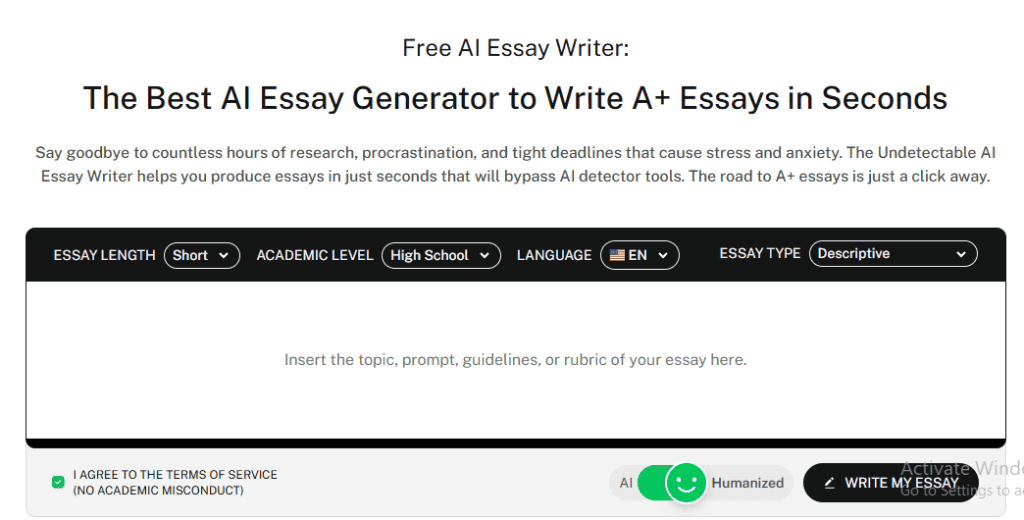
The AI Essay Writer generates complete, well-organized essays in seconds.
It understands how to structure an introduction with a thesis, develop arguments in body paragraphs, and write a clean, persuasive conclusion.
You input the topic. It does the heavy lifting.
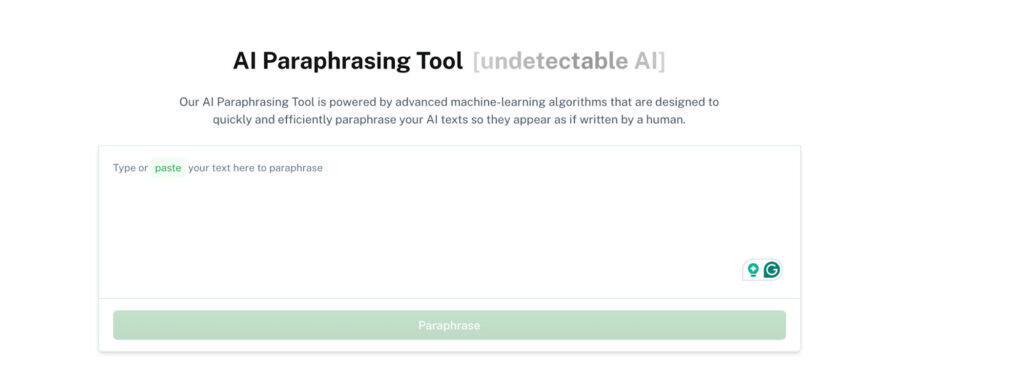
The Paraphrasing tool helps you rework awkward lines into sharp, structured ones.
Whether your claim lacks punch or your transitions feel clunky, just drop them in, and it’ll rewrite them like a seasoned editor.

Want instant feedback or structure suggestions while writing? Use AI Chat like a virtual tutor.
You can ask things like, “Is my paragraph structure clear?” or “Can you show me a better example of a conclusion for this topic?” It responds with humanized answers you can use directly or tweak.
Writing a clean, logical essay is hard enough. Essay writing tools from Undetectable AI help you write faster and better.
And with humanization built-in, your work won’t just pass structure checks but pass AI detectors too.
Don’t forget to also check out our AI Detector and Humanizer in the widget below!
FAQs About Essay Structure
Can I have more than three body paragraphs?
Yes. Three is standard, but longer essays can have as many as needed as long as each supports your thesis.
Where should my thesis statement go?
At the end of your introduction.
It sets the direction for everything that follows.
How long should each part be?
Intro and conclusion: around 10–15% of the total word count.
The rest goes to your body paragraphs.
Do all essays follow this structure?
Most academic essays do.
Creative, reflective, or experimental pieces may break the rules, but only when there’s a good reason.
Good Essays Have Bones
Essay structure provides the framework that allows your ideas to shine.
The fundamental parts—introduction, body paragraphs, and conclusion—create a path for readers to follow your thinking from the initial claim to the final insight.
While these core elements remain constant across most essays, the flexibility within this structure allows for endless variety in expression.
As you practice writing essays, you’ll develop an intuitive sense of how to organize your thoughts effectively.
You’ll learn when to follow conventional structures strictly and when to adapt them to better serve your purpose.
You’ll discover that essay structure isn’t a rigid formula but a set of tools that help you communicate more clearly.
Try our Undetectable AI tools mentioned above to instantly generate well-structured drafts.
Use the AI Paraphraser to polish your thesis or topic sentences, or chat directly with the AI Chat for real-time structure feedback.
Writing essays doesn’t have to be hard, especially when your tools are this smart.
